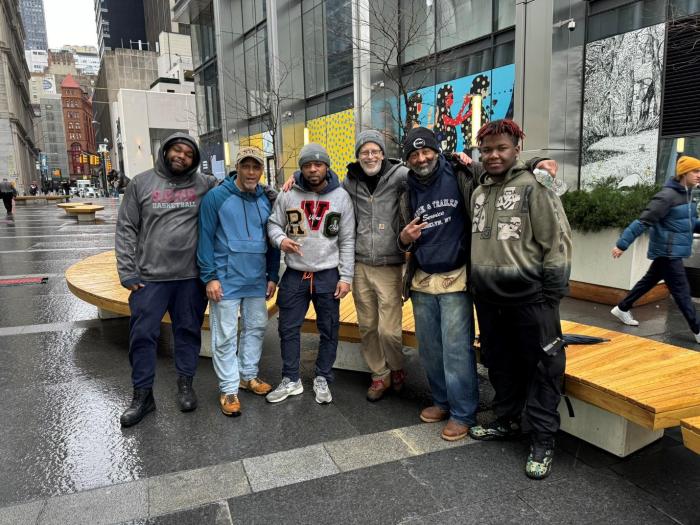If you’re voting in the April 19th New York Democratic primary, here’s what will happen:
Of the 291 delegates at stake, 163 will be divvied up proportionally based on the popular vote within congressional districts. One woman, .00003 delegates, approximately.
Eighty-four delegates are divvied up proportionally based on the number of above delegates won.
Then there are 44 so-called “superdelegates” — elected officials and party leaders who are free to pick any candidate. Your vote doesn’t matter here, and, by the way, all but four have already come out in support of Hillary Clinton.
Stuart Appelbaum, the president of the Retail, Wholesale and Department Store Union and a member of the Democratic National Committee, is one of those superdelegates.
Though he can switch his vote at any time, he currently supports Clinton’s campaign.
“I’ve been given the position of superdelegate with certain responsibilities,” Appelbaum told amNewYork, of which exercising his “judgment” is one.
The Democratic Party added superdelegates to the nominating process so that the conventions include “a voice from party leaders.” In practice, that means that even after your miniscule vote is counted, Appelbaum and the other 715 superdelegates across the country reserve the right to act as a counterweight to popular support for another candidate — say, Sen. Bernie Sanders.
Birth of the superdelegate
The Democratic Party introduced superdelegates in 1982, after the contentious conventions of ’72 and ’76, in which outsiders George McGovern and Jimmy Carter were able to win the nominations against the better wishes of the party establishment.
Superdelegates could be used to break a deadlocked convention, when no candidate won a majority of voting delegates in the primaries. But really, they are a means of strengthening the party and maintaining discipline. If a truly dire situation arose, they could deflect the will of the people. If Donald Trump were running as a Democrat, for example, he would be fairly easy to halt at the party’s convention. That situation has never come to pass.
In 2008, superdelegates didn’t band together to make a desperate stand for Hillary Clinton. As Barack Obama began to rack up primary wins in the spring, many uncommitted delegates sided with him, and some Clinton superdelegates switched over to the eventual frontrunner — including Rep. Charles Rangel of New York.
Today, the system still stands. Jimmy Carter himself is a superdelegate. And the system has become the focus of those supporting Sanders’ insurgent candidate against Clinton, who has amassed a huge lead in the superdelegate category.
In New Hampshire, Sanders’ double-digit win was offset by Clinton’s delegate gains. And the prospect remains that superdelegates could deign to use the “judgment” they’re charged with, as Appelbaum says. In this case, with a candidate far from the center of the party, we’re living the situation the system was built for.
Who are the superdelegates?
New York’s 44 superdelegates include 22 members of the Democratic National Committee, the 19 Democrats in New York’s Congressional delegation and Gov. Andrew Cuomo. The last two are “distinguished party leaders” — former Sen. George Mitchell, who will be leading the St. Patrick’s Day Parade next week, and a certain other Clinton (that’s Bill).
Former Assembly Speaker Sheldon Silver is one of those superdelegates, but he was convicted on corruption charges, so he probably won’t be casting any votes on the convention floor.
According to the Green Papers, an aggregated source of superdelegate information, only three other superdelegates remain uncommitted — Mitchell, Assemb. Vivian Cook, and Leah Daughtry, who as chief executive of the convention says she is bound to remain uncommitted during the primary process.
That leaves little comfort for Sanders, should he happen to narrow the popular gap in New York as he did in Michigan on Tuesday.
Beyond choosing a nominee, one of the objectives of the convention, says Appelbaum, is determining the party’s platform: “What should we stand for? What are our values?” he says. It’s not “about people going to parties.”
Appelbaum points to 1948, when the platform included the question of civil rights. The implication is that sometimes, the cooler heads of party leaders are needed to serve the better angels of our nature. The conventions absorb the tugs of extreme positions.
Tug too hard, though, and you might not have a party at all.
This is amExpress, the conversation starter for New Yorkers. Subscribe at amny.com/amexpress.

















